Monterrey
- This article is about the Mexican city; for other uses, see Monterrey (disambiguation).
| City of Monterrey Ciudad de Monterrey |
|||
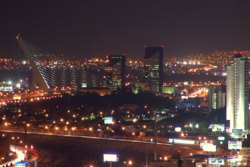 |
|||
|
|||
| Nickname(s): Northern Sultan, The City of the Mountains | |||
| Motto: Work Tempers the Spirit | |||
 |
|||
| Coordinates: | |||
| Country | Mexico | ||
|---|---|---|---|
| State | Nuevo León | ||
| Founded | 20 September 1596 | ||
| Government | |||
| - Mayor | Adalberto Madero (PAN) |
||
| Area | |||
| - City | 860.70 km² (332.3 sq mi) | ||
| - Metro | 5,346.80 km² (2,064.4 sq mi) | ||
| Elevation | 537 m (1,762 ft) | ||
| Population (2005) | |||
| - City | 1,133,814 | ||
| - Density | 1,989/km² (5,151.5/sq mi) | ||
| - Metro | 3,664,331 | ||
| - Metro Density | 685/km² (1,774.1/sq mi) | ||
| - Demonym | Regiomontano | ||
| Time zone | Central Standard Time (UTC-6) | ||
| - Summer (DST) | Central Daylight Time (UTC-5) | ||
| Website: http://www.monterrey.gob.mx | |||
Monterrey IPA: [ˌmontɛˈrei] (Spanish: Monterrey) is the capital city of the northeastern Mexican state of Nuevo León and a municipality of the same name. Also known as "Sultana del Norte" (Northern Sultan), Monterrey is one of the three most important cities in all Mexico and a modern industrial and business center. The city proper has population of 1.1 million, and the metropolitan area of Monterrey has a population of 3.7 million (INEGI 2005). The city is named after the Countess of Monterrei (a city in Galicia, Spain) wife of the Viceroy of New Spain Gaspar de Zúñiga y Acevedo, Count of Monterrey.
Residents of Monterrey are often called Regiomontanos (or Regiomontanas).
History
- See also articles in the category History of Monterrey


In the mid-1500s, the valley which Monterrey now occupies was known as the Extremadura Valley, an area largely unexplored by the Spanish. Several expeditions led by Alberto del Canto tried to colonize the area, the most important in 1577, but were always unsuccessful because the population left for more prosperous towns. The Spanish expeditionary Luis Carvajal y de la Cueva negotiated with King Philip II of Spain to establish a territory in northern New Spain, which would be called Nuevo León, the "New Kingdom of León". In 1580 he arrived in the newly granted lands but it was not until 1582 that he established a settlement called San Luis Rey de Francia within present-day Monterrey. New Kingdom of León was an enormous area extending westwards from the port of Tampico to the limits of Nueva Vizcaya ("New Vizcaya", now State of Chihuahua), and around 1,000 kilometers northwards. Carvajal's plans of colonization were frustrated by the Spanish Inquisition that accused and jailed him. For eight years Nuevo León was abandoned and uninhabited but finally, a third expedition of twelve families led by Diego de Montemayor founded Ciudad Metropolitana de Nuestra Señora de Monterrey ("Metropolitan City of Our Lady of Monterrey") on September 20, 1596, next to a spring called Ojos de Agua de Santa Lucia, where the Museum of Mexican History is now located.

During the years of Spanish rule, Monterrey remained a small city, and its population varied from a few hundred to only dozens. The city was a place that facilitated trade between San Antonio (now in Texas), Tampico and from Saltillo to the center of the country. Tampico's port brought many products from Europe, while Saltillo concentrated the Northern Territories' trade with the capital, Mexico City. San Antonio was the key trade point with the northern foreign colonies (British and French).
In the 19th century, after the Mexican Independence War, Monterrey rose as a key economic center for the newly formed nation, especially due to its balanced ties between Europe (with its connections to Tampico), the United States (with its connections to San Antonio), and the capital (through Saltillo). In 1824, the "New Kingdom of León" became the State of Nuevo León, and Monterrey was selected as its capital. However, the political instability that followed the first 50 years of the new country allowed two American invasions and an internal secession war, during which the Governor of the State annexed the Coahuila and Tamaulipas states, designating Monterrey as the capital of the enlarged state.
In 1846, the earliest large-scale engagement of the Mexican-American War took place in the city, known as the Battle of Monterrey. Mexican forces were forced to surrender but only after successfully repelling US forces during the first few advances on the city. The battle inflicted high casualties on both sides, much of them resulting from hand-to-hand combat within the walls of the city center.
Most of the generals in the Mexican War against France were natives of the city, including Mariano Escobedo, Juan Zuazua and Jerónimo Treviño.

During the last decade of the 19th century, the city of Monterrey was linked by railroad, which benefitted industry. It was during this period that José Eleuterio González founded the Colegio Civil, an early effort to create a non-religious university in Monterrey; he also founded the Hospital Civil which is now one of the best public hospitals in the northeast of Mexico, and serves as medical school support to the School of Medicine of the Autonomous University of Nuevo León (UANL). Vicente Ferrara founded the Fundidora de Fierro y Acero de Monterrey,[1] a steel-producing company that accelerated the already fast industrialization of the city and became one of the world's biggest at its time.
In 1988, Hurricane Gilbert caused great damage to the city; the Santa Catarina River overflowed, causing about 100 deaths and severe economic damage.
The city has hosted international events such as the 2002 United Nation Conference on Financing for Development with the participation of more than 50 Heads of State and Government, as well as other ministers and senior delegates from over 150 countries. The conference resulted in the adoption of the Monterrey Consensus, which has become one relevant reference point for international development and cooperation. In 2004, the OAS Special Summit of the Americas was attended by almost all the presidents of the Americas. In 1986, several official games of the 1986 FIFA World Cup were hosted.
In 2007, Monterrey held the Universal Forum of Cultures with four million visitors.
Geography
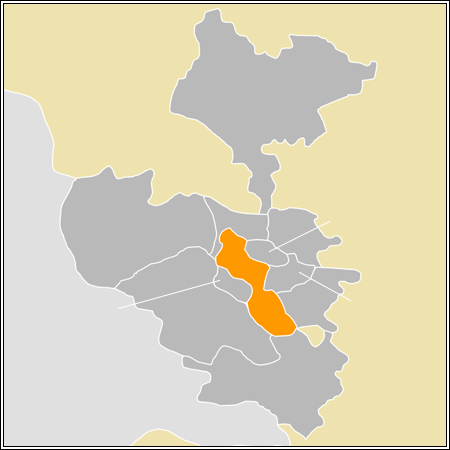
de los Garza
Garza García
STATE
The city of Monterrey is located at , and 530 metres (1,740 ft) above sea level in the northeastern Mexican state of Nuevo León. The Santa Catarina River—dry most of the year on the surface but with flowing underground water—bisects the city.
Monterrey lies at the foothills of the Sierra Madre Oriental mountain range, which start abruptly south of the city. A small hill, the Cerro del Topo and the smaller Topo Chico are located in the suburbs of San Nicolás de los Garza and Escobedo. West of the city rises the Cerro de las Mitras (Mountain of the Mitres), which resemble the profile of several bishops with their mitres.
Cerro de la Silla (Saddle Mountain) dominates the view east of the city. Cerro de la Loma Larga—South of the Santa Catarina river—separates Monterrey from the suburb of San Pedro Garza García. At the summit of the Cerro del Obispado, north of the river, is the historic Bishopric Palace, site of one of the most important battles of the Mexican-American War.
Natural areas
The mountains surrounding Monterrey offer a breathtaking landscape containing many canyons, trails and roads crossing deserts and forests. Suitable trails are available for casual hikers to expert rockclimbers. The Sierra Madre Oriental mountains south of the city are included in the "Parque Nacional Cumbres de Monterrey" (National Park), which was added to UNESCO’s Man and the Biosphere (MAB) Program of Biosphere Reserves in 2006.[2]
Cumbres de Monterrey includes:
- Parque Ecológico Chipinque,[3] which contains forested areas (oak and oak-pine mainly).[4][5][6] Parque Ecológico Chipinque is within a 10-minute drive from downtown Monterrey; this park and the adjacent park land include spectacular scenery of mountains and forests.
- La Estanzuela state park, about 7 km (4 mi) south of downtown Monterrey and includes a small river and forested area.[7]
- La Huasteca, with vertical-walled cliffs and canyons in a desert setting by the city. It is in Santa Catarina, west of downtown towards Saltillo.
- [El Potrero Chico] sits 30 minutes North East of the city towards Monclova It's towering 2000 ft. walls shadow the little town and are truly humbling. If you wish you can scale these walls. Contact El Potero Chico Climbing School www.elpotrerochico.com.mx
- Birding is also a popular activity around Monterrey.[8]
Demographics
The municipality has a population of 1,133,814 inhabitants. The Monterrey metropolitan area is the third most populous city in Mexico with more than 3.7 million. It is composed of the adjacent cities (municipalities) of: Apodaca, Escobedo, García, Guadalupe, Juárez, Salinas Victoria, San Nicolás de los Garza, San Pedro Garza García, Santa Catarina, and Santiago.[9]
Climate
| for Monterrey | |||||||||||||||||||||||||||||||||||||||||||||||
|---|---|---|---|---|---|---|---|---|---|---|---|---|---|---|---|---|---|---|---|---|---|---|---|---|---|---|---|---|---|---|---|---|---|---|---|---|---|---|---|---|---|---|---|---|---|---|---|
| J | F | M | A | M | J | J | A | S | O | N | D | ||||||||||||||||||||||||||||||||||||
|
20
20
8
|
12
23
10
|
15
27
14
|
31
30
17
|
67
32
20
|
87
34
22
|
50
34
22
|
84
34
22
|
153
31
21
|
72
27
17
|
21
24
13
|
20
21
9
|
||||||||||||||||||||||||||||||||||||
| temperatures in °C precipitation totals in mm source: [3] |
|||||||||||||||||||||||||||||||||||||||||||||||
|
Imperial conversion
|
|||||||||||||||||||||||||||||||||||||||||||||||
Monterrey has a humid subtropical climate. Its weather, though reasonably pleasant in spring and autumn, is hot in the summer; the average high reaches 35 °C (95 °F) in August, with an average low of 23 °C (74 °F). Winters are cool but not cold. The average January high is 19 °C (67 °F) and the average low in January is 8 °C (48 °F); however, temperatures below freezing are rare.[10] Rainfall is scarce, but more prominent during May through September. Humidity in winter can be high, although without showers. Monterrey is very extreme in weather change, sometimes reaching 36°C (98°F) in January and February, the coldest period, though this is not seen frequently. Most extreme weather change occurs with rainfall in summer, which changes extreme heat to cooler temperatures, and the absence of northern winds in winter, sometimes causing extreme or abnormally high temperatures. Snowfall is a very rare event.
Government

Monterrey and its metropolitan area are municipalities each of them governed by a democratically elected Presidente Municipal (Municipal President) or Mayor for a period of three years with no right to reelection. The political environment is one of civility and in the last decade political parties have been alternating office.
The City Council of Monterrey (Cabildo de Monterrey) is an organ integrated by the Mayor, the Regidores and the Síndicos. The Mayor is the executor of the determinations of the City Council and the person directly in charge of the public municipal administration. The Regidores represent the community and their mission is to collectively define the city policies in all the subjects affecting it. The Síndicos are in charge of watching and legally defend the city interests, as well as in charge of watching the City Treasury status and the municipal patrimony.[11]
The current Mayor of Monterrey is Adalberto Madero (PAN), and he will remain in office until October 31, 2009. He was elected mayor in the past municipal election on July 2, 2006 (Official results: PAN 45.51%, PRI 43.63%, PRD 4.9%, Others 2.85%).[12]
The political parties with representation in the city are the Institutional Revolutionary Party or PRI, the National Action Party or PAN, the Party of the Democratic Revolution or PRD, the Labor Party or PT, the Green Party, Convergence, Socialdemocratic Party and Nueva Alianza.
Public safety
Monterrey was ranked as the most secure city in Latin America[13] and Mexico in 2005, and one of the two most secure in 2006.
From 2003 to 2007, the city saw its share of drug violence related to turf battles between warring cartels.
There are two police departments guarding the city, the Police of the City of Monterrey (locally known as the Policía Regia),[14] dependent of the municipal government, and the State Public Safety.[15] The Policía Regia protects the city's downtown and main areas, while the State Public Safety is in charge of the farthest areas.
There are two major emergency telephone numbers: Monterrey Emergencies telephone is 060[16] and the Metropolitan Area Emergency Number is 066.
The state governor is considered the "mayor" of the metropolitan area of Monterrey (A group of several municipalities, forming Monterrey city) since the city accounts for about 95% of the state population.
Infrastructure
Transportation
- See also articles in the category Transportation in Monterrey
Monterrey is well connected with the USA border, the sea and inland Mexico through several modern roads, including the Carretera Nacional (also known as the Panamerican Highway) that runs from Nuevo Laredo to Mexico City and south, and the Carretera Interoceánica connecting Matamoros with the port of Mazatlán on the Pacific; it is also crossed by highways 40, 45, 57. The divided highway Monterrey-Saltillo-Matehuala-Mexico City is the main land corridor to interior Mexico.
There are several between-cities bus lines at the bus station downtown. Buses are modern and efficient, with many arrivals and departures everyday into deeper Mexico, to the U.S. border and into the United States.
Monterrey is also connected by at least three important railroad freight lines: Nuevo Laredo-Mexico City, Monterrey-Tampico, and Monterrey-Pacific (Mazatlán).
Public transportation in the city includes a modern but limited in length, rapid transit system or metro with only two lines [17][18], the Metro Línea 2 was expanded to the north of the city, and construction works finished in October 2008. There are many city bus lines that vary in quality and route, although by decree, all bus lines (privately funded) had to change their vehicles by January 2007. Thousands of economical and efficient taxi cabs can also be found. Traffic jams, although less impressive than those seen in other Latin American big cities, are becoming more frequent, primarily at rush hours.
Airports
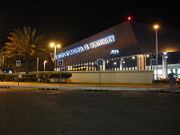
There are two international airports: General Mariano Escobedo International Airport (served by major international carriers and moving more than 6.5 million passengers in 2007)[19] and Del Norte International Airport, a primarily private airport.
Monterrey is linked through frequent non-stop flights to many Mexican cities and to key United States hubs (Atlanta, Austin, Chicago-O'Hare, Dallas/Fort Worth, Detroit, Los Angeles, Houston-Intercontinental, and JFK/New York). There is also a twice a week non-stop service to Madrid, Spain, operated by Aeroméxico and to Rome, Italy. Monterrey is the second most important city for the operating routes of Aeroméxico.[20]
Five airlines have their operational bases and headquarters in Monterrey, Aviacsa, Aeroméxico Connect, a new LCC Viva Aerobus; and Magnicharters, a charter airline. There is no public transportation from Monterrey International Airport to the city. However, a cartel of taxi services link the airport with the city and charge around $20 US for a one-way ride to the city. From this airport, there is a bus shuttle to nearby Saltillo.[21] Inter-city bus services run daily into the interior, as well as north to the US border and points beyond.
Hospitals
Monterrey has some of the best hospitals in Mexico, especially in cancer treatment, heart diseases, obesity surgery and plastic surgery. There are public and private hospital care. The Mexican Social Security Institute (IMSS) have two major regional hospitals in the city, the Specialties Regional Hospital # 33 and the Gynecology and Obsterics Regional Hospital, serving also the northeastern states of Coahuila and Tamaulipas. Several smaller IMSS hospitals can be found such as the Traumatology and Orthopedics Hospital and the General Hospital # 25. State government owns the Metropolitan Hospital, located in the suburb of San Nicolás de los Garza and it is building the Hospital of the Children and Mother Care in Guadalupe suburb.
The University of Nuevo León runs the public University Hospital, with a high-level shock-trauma unit and a specialized clinic for child cancer treatment. It is recognized as the best public hospital in the city and the UANL School of Medicine as one of the best in the country. On the other hand the Tecnológico de Monterrey runs the San José-Tec de Monterrey private hospital.
Monterrey is considered an international healthcare hub because of the world class private hospitals and facilities that can be found in the city. Some of them are the only two JCI accredited hospitals in the country, CHRISTUS Muguerza and San José-Tec de Monterrey,[22] the Hospital OCA, the Santa Engracia Hospital, San Vicente Hospital and the San Lucas Hospital (Plastic Surgery). Its convenient location and quality of medical care have made of Monterrey a very popular medical tourism destination for United States patients.[23][24]
Economy

- See also: :Category:Companies based in Monterrey
Monterrey is a major industrial center in northern Mexico , producing a GDP of 78.5 billion US dollars (2006). The city's GDP per capita in 2006 was 21,788 US dollars. The city was ranked second-best to do business in Mexico in 2005 and is currently ranked as the third best by the América Economía magazine.
Experts note that Mexico City is burdened by problems of crime, congestion and pollution that make smaller but better-run and faster-growing cities like Monterrey more attractive to entrepreneurs and ambitious workers. Monterrey is expected to grow to an approximate 160 billion US dollars in the near future.
Because of its strong steel industry, it is often called "the Pittsburgh of Mexico". The city has prominent positions in sectors such as steel, cement, glass, auto parts, and brewing. In 1999 Fortune magazine recognized Monterrey as the best city in Latin America in which to do business. The magazine attributes its economic wealth in part to its proximity with the United States-Mexican border and mentions Monterrey as a significant city with economic links to the United States.[25]
Industrialization was accelerated in the mid 19th century by the Compañia Fundidora de Fierro y Acero Monterrey a steel-processing company. Today Monterrey is home to transnational conglomerates such as Cemex (the world's largest cement company), FEMSA (Coca-Cola Latin America), Alfa (petrochemicals, food, telecommunications and auto parts), Axtel (telecommunications), Vitro (glass), Selther (leading mattress and rest systems firm in Latin America), Gruma (food), and Banorte (financial services). The FEMSA corporation owns a large brewery, the Cervecería Cuauhtémoc Moctezuma that produces the brands Sol, Tecate, Indio, Dos Equis and Carta Blanca among others. By the end of the same year, there were more than 13,000 manufacturing companies, 55,000 retail stores, and more than 52,000 service firms in Monterrey.[26] Monterrey accounts for about 95% of the State of Nuevo Leon's GDP, and 30% of Mexico's manufactured exports.[27]
The metals sector, dominated by iron and steel, accounted for 6 percent of manufacturing GNP in 1994.[28] Mexico's steel industry is centered in Monterrey, where the country's first steel mills opened in 1903. Steel processing plants in Monterrey, privatized in 1986, accounted for about half of Mexico's total steel output in the early 1990s.[28]
Monterrey was ranked 94th worldwide and fifth in Latin America in terms of Quality of Life according to Mercer Human Resource Consulting (2006),[29] and was ranked second in 2005 and fourth in 2006, according to America Economia.
Monterrey is also a great city to do shopping. Some of the shopping malls in the city include Paseo San Pedro, Plaza Fiesta San Agustín, Galerías Monterrey, and Galerías Valle Oriente, which distribute goods and services to the Mexican population.
Education

The city is considered one of the main educational centers in Mexico.
The Universidad Autónoma de Nuevo León (Autonomous University of Nuevo León, UANL), is the third largest Mexican university and is ranked by the Reader's Digest-AC Nielsen Survey 2005 as the top public university in northeast Mexico.[30] Its main campus, Ciudad Universitaria (University City), covers approximately 67,630,000 square metres (17,000 acres).[31] The UANL system comprises 26 colleges (faculties), 22 graduate divisions, 24 high schools, 1 center of bilingual education and 3 technical high schools.
Other universities include University of Monterrey (UDEM) and the Universidad del Norte (UN).[32]
The Universidad de Monterrey stands out as model of liberal arts education. UDEM was founded by the religious congregations of the Sisters of Immaculate Mary of Guadalupe, the nuns of the Sacred Heart and the Marist and La Salle brothers, all of them supported by an enthusiastic association of catholic citizens.
In 2000 UDEM became the first Mexican University to fill 100 percent of its master's degree program faculty positions with doctorate level professors.
On December 2001, Universidad de Monterrey was accredited by the Southern Association of Colleges and Schools (SACS), to deliver bachelor and master level educational programs.
This way, UDEM became one of the five Latin American universities to be members of the SACS, together with Monterrey's Tech, Universidad de las Americas - Puebla, Universidad de las Americas - Mexico and the Instituto Centro Americano de Administración de Empresas in Costa Rica.
Monterrey is also the headquarters of the Instituto Tecnológico y de Estudios Superiores de Monterrey (Monterrey Institute of Technology and Higher Studies, ITESM or "Tec de Monterrey"), a private university ranked by the Reader's Digest-AC Nielsen Survey 2005 as the top university (public or private) in all Mexico. As the center of its own educational network, it has 33 campuses and exchange agreements with more than 400 universities world-wide.
Founded in 1969 with the support of local leading multinational corporations such as CEMEX, ALFA, FEMSA, GAMESA, PROTEXA & CYDSA, the Universidad Regiomontana is a private university offering preparatory, undergraduate and graduate programs. With agreements with more than 200 universities across the globe, it is member of GATE (Global Alliance for Transnational Education), FIMPES (Federación de Instituciones Mexicanas Particulares de Educación Superior) and holds an ISO 9001 Certification. Its urban campus attracts many working professionals who complement and enrich the academic experience.
The Biblioteca Central located at the Macroplaza, the Biblioteca Magna Universitaria[33] and the Biblioteca Alfonsina within the UANL University campus, are the main public libraries in the city.
ASFM & Instituto San Roberto are the most prestigious schools in the city, both approved by the Southern Association of Colleges and Schools, or SACS. ISR is owned by the international school group Meritas. Both ASFM & ISR offer “K-12” education.
Culture
Food

The most traditional dish from Monterrey is cabrito al pastor, kid goat cooked on embers based on the Jewish cuisine of the founders of the city. Other local dishes and customs that perhaps date back to the Crypto-Judaism of these founders are the "semita" (bread without leavening), the capirotada dessert (a mix of cooked bread, cheese, raisins, peanuts, and crystallized sugarcane juice), and the relative absence of pork dishes. Another famous local dish is machacado con huevo, scrambled eggs, dry beef and salsa.
Carne asada (grilled beef) on weekends remains one of the most cherished traditions in Monterrey's families. When people gather to celebrate birthdays, family reunions, soccer games or just to share time with their friends, carne asada is a must. It is usually served with grilled onions, baked potatoes and sausages or chopped as tacos. Carne asada gatherings generally take place in the afternoons opposed to central Mexico tradition of having carne asada between 2 and 4pm. Locally brewed beer and cola soft drinks are an almost mandatory part of the weekly ritual. The traditional desserts, "glorias" and "obleas," are both traditional candies from Nuevo León.
Although not still comparable with the kaleidoscopic gastronomy of Mexico City and some major Mexican beach resorts, several good restaurants offering Italian, Chinese, Mediterranean, German, Japanese, and Argentinian food can be found throughout downtown Monterrey, Southern Monterrey (Valle Alto) and San Pedro Garza Garcia suburb.
Sports
- See also articles in the category Sport in Monterrey
Monterrey has two soccer teams in the Mexican league, the Club de Fútbol Monterrey, known as the Rayados who plays in the Estadio Tecnológico, a facility owned by the ITESM, and rented to the team. And the UANL Tigres, the team of the U.A.N.L. and they play at Estadio Universitario which is located at the main campus of the university. Both teams are related to the city on the derby, called Clásico Regiomontano. Recently there is a proposed project to build a stadium for both teams, the stadium's name is planned to be "Estadio Internacional Monterrey"[34], although the idea was dropped out by both teams. Club de Fútbol Monterrey plans to build a new stadium able to sit a crowd of 50,000. It is scheduled to be finished by 2011, named "Estadio de Fútbol Monterrey". The new stadium is to be financed by the club's managing firm, FEMSA, and will remain the club's property for fifty years before becoming property of the government.[35]
In addition, two professional indoor soccer teams were hosted in the past, the Monterrey La Raza, members of the Continental Indoor Soccer League and World Indoor Soccer League and the Monterrey Fury, members of the current Major Indoor Soccer League. The city was awarded another franchise to begin play in the fall of 2007 in the MISL.
The city hosted many official games during the 1986 FIFA World Cup.
Baseball has a long history in the city, where it became the most popular sport during the early 20th century. Monterrey has been champion of the Little League World Series three times (1957, 1958 and 1997), and has been host of US Major League Baseball games. In the Mexican Baseball League, the Sultanes de Monterrey are one important team every season and have won the national title several times. In the year 2003, the city unsuccessfully attempted to buy (and relocate to Monterrey) the Montreal Expos franchise of the US Major League Baseball.The Sultanes de Monterrey, are a Mexican League baseball team based in Monterrey, Mexico. They are in the Northern Division. The team was formed May 20th, 1939 as Carta Blanca (A local beer brand, owned by Cerveceria Cuauhtémoc Moctezuma which owned the team). The team was also known as the gray ghosts. Soon, they became one of the most important teams in the league, winning its first championship in 1943. In total, the Sultanes have collected nine championships (1943, 1947, 1948, 1949, 1962, 1991, 1995, 1996 and 2007), including three straight (1947-1949) under the legendary Cuban manager Lázaro Salazar.
The Sultanes play in the Estadio de Beisbol Monterrey, the largest baseball stadium in Mexico.[36]
There are two professional basketball teams: Fuerza Regia that plays in the national league, Liga Nacional de Baloncesto Profesional and the Monterrey Venom that plays in the minor league American Basketball Association. Fuerza Regia plays at the Monterrey Arena while the Monterrey Poison plays at the gymnasium of the ITESM.

The city has hosted the Champ Car race in Fundidora Park from 2001 to 2005 and hosted the A1 Grand Prix of Nations on February 2006.
In 2004 Monterrey hosted the World Karate Federation Senior World Championships. In April 2004, Monterrey's Arena Monterrey became the first city to host WWE in Mexico. In 2007 Monterrey hosted the Women's WTBA World Tenpin Bowling Championships
American football is well represented nationwide, with two college local teams: the Auténticos Tigres (UANL) and the Borregos (ITESM) that play in the National College League (ONEFA); their games attract thousands (mainly student crowds). A vast number of kids with ages ranging from 5 to 15 practice this sport during summer and fall, and play on Sunday mostly; teams with a great history in the city are Halcones, Aguilas, Pumas, Avispones,Potros and Vaqueros.they have a big league called AFAIM
People can also find golf, fishing, camping, and extreme-sports outdoors near the city (bungee jumping at Cola de Caballo, rock-climbing, hiking, mountain bike). In particular there is international-level rock-climbing places like la Huasteca, Potrero Chico and many other canyons. El Potrero chico offers easy and intermediate terrain for learning to rock climb.
Contemporary music
- See also articles in the category Musical groups from Monterrey
Starting in the 60's Monterrey has been known for "Norteno" music which is the trademark music of the city, bands like Ramon Ayala, Pesado, Duelo and other Mexican "Regional" music bands perform at the different clubs in the city. Monterrey, Nuevo León has witnessed the birth of several bands that have become internationally acclaimed. Their genres vary considerably. Bands include Plastilina Mosh, Control Machete, Kinky, El Gran Silencio, Jumbo, Panda, Genitallica,Zurdok, Heavy Metal Band "IRA", Maligno, Stentor and Avatar. Gothic Metal represented by bands like MutuM and Eon. The Symphonic Black Meta like selvmordinnehelvete, Evilheart and Aiwass. The song "Los Oxidados" by Plastilina Mosh opens the 2005 movie "Mr. & Mrs. Smith". Kinky performed at the 2004 edition of the Coachella Valley Music and Arts Festival in California, along with Radiohead, The Cure and The Killers. A few of the most popular live music venues in Monterrey include Arena Monterrey, Auditorio Coca-Cola, Cafe Iguana, Ibex Rockbar, Arena Santa Lucia, McMullen's and Uma Bar, all located in the Barrio Antiguo section of the city.
Landmarks and cultural sites
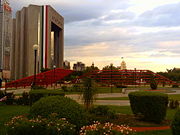
- Santa Lucia Riverwalk, an artificial river build between 1996 and 2007. It currently joins the Macroplaza with the Fundidora Park.
- The Cerro de la Silla (Saddle Mountain) is with no doubt the primary and most recognized symbol of the city.
- La Macroplaza, one of the world's largest plazas, is the cultural and administrative heart of the city featuring remarkable monuments, green areas and buildings.
- Faro del Comercio (Lighthouse of Commerce), another trademark of the city. This monuments beams a green laser around the city at night.
- Barrio Antiguo (old neighborhood), charming area where bars, cafes, art galleries and restaurants can be found. On November of every year the Festival Cultural Barrio Antiguo takes place with national and international artists and performers.
- The Museum of Modern Art is a remarkable model of post-modern Mexican architecture designed by Ricardo Legorreta with the objective of creating different ambiances for artists and visitors from all around the world.
- Monterrey's Inukshuk is one of only a handful of authentic examples to be found outside Canada of these stone monuments from the high Arctic. The sculpture was created in situ by the renowned Inuit artist Bill Nasogaluak in 2007 and was a gift to the state of Nuevo Leon from the Canadian Chamber of Commerce and the Government of Canada.

- Fundidora Park is a large urban industrial park that contains old foundry buildings, 120 hectares of natural ambiance, artificial lakes, playgrounds, alternative cinema (Cineteca), museum (Photo Collection, the State Plastic Arts Collection, Exhibits and Spaces), hotel, auditorium and convention center.
- Puente de la Unidad (sometimes called Puente Atirantado) is a suspension bridge that crosses the Río Santa Catarina and joins San Pedro Garza García with Monterrey.
- The Alfa Planetarium is the first IMAX dome built in Latin America and fourth in the world.
- The Government Palace of Nuevo León is a pink marble of Neoclassical architecture where the governor's office is located.
- The Museum of Mexican History contains collections dating from the Pre-Columbian days through the late 1900s. The museum features interactive displays of information, guided tours in both English and Spanish and a large collection of pieces of Mexican history.
- El Cerro del Obispado (Bishopric Hill) which includes a public, scenic lookout called Mirador del Obispado, a Monumental flag and the museum inside the Palacio del Obispado (the Bishopric Palace).
- The Museo Metropolitano de Monterrey, formerly the City Hall, is a lovely small museum across from the south end of la Macroplaza.
- El Museo del Vidrio,[37] devoted mainly to glass art and history; remarkable, diverse and changing exhibits.
- ITESM, ITESM has two distinctive buildings CEDES which houses the administration of the ITESM nationwide system and the CETEC which houses the main computer classroom and other offices.
- La Cervecería Cuauhtémoc Moctezuma, with its XIX century buildings and where the national Baseball Hall of Fame (Salón de la Fama) is located.
- La Basílica del Roble, one of the three Catholic basilicas of the city (the others being of Guadalupe and "La Purisima". The Basilica del Roble was built in honor of the Virgin "del Roble", patron of the City.
- Catedral Metropolitana de Nuestra Señora de Monterrey- This imposing cathedral is the seat of the local archdiocese. Its exterior and interior demonstrate different architectural styles, having taken from 1770 until 1889 to complete. A pair of towers zealously guarding its belfries flanks the elaborate ornamental work of the facade. Inside there are paintings of the colonial period to the 19th century, as well as murals by Angel Zárraga depicting themes for the most part of the Franciscan evangelisation. It is worth visiting for its delicate beauty.
- Kidzania (formerly La Ciudad de Los Niños), is a theme park made out of the replica of a city, and also, kids must work to earn money called KidZos, just like adults.
Sightseeing
- Grutas de Garcia - an extensive (2 km?) cave system located northwest of Monterrey in the Villa de Garcia. A scenic "chair-lift" vehicle lifts visitors to the caves' entrance hundreds of feet above, on the hill slope.
- The Cola de Caballo (Horse tail) waterfall, on the mountains near the towns of Santiago and El Cercado, about 35 km. (22 miles) south.
- On the way to the Cola de Caballo waterfall (Carretera Nacional going to Ciudad Victoria, Tamaulipas), in Santiago, the Presa Rodrigo Gomez or "La Boca" ("La Boca" Dam)[38][39] lays nested between green hills.
- On this area, before La Boca Dam, at Los Cavazos (25 km from Monterrey) there are many small, family-owned restaurants which serve Mexican and local food, produce, flowers, and candies at low prices; there are also stands of Mexican and local handcrafts and hand-made wooden and metal furniture. This area is a mercado by the road; traffic is heavy on summer Sundays.
- The Carretera Nacional area south of Monterrey enjoys a relatively humid micro climate that allows the growth of lush, subtropical vegetation; this gives this area a garden-like atmosphere. Indeed, most of the city's plant nurseries (viveros) are located in this zone.
- Bioparque Estrella- Wildlife Safari park.[40]
Broadcasting and media
Monterrey is an important producer and broadcaster of media and entertainment in Mexico. Grupo Multimedios operates 2 television channels in the city, one of them broadcasting also to the Mexican states of Coahuila, Tamaulipas, Veracruz, Chihuahua and Guanajuato, and to several cities in the United States. Televisa and TV Azteca, the two only national television networks, have local stations in the city.
Grupo Reforma, one of the most widely read newsources in Mexico originated in the city with the newspaper El Norte. Milenio is another newspaper of high distribution, daily printing local editions in the most important Mexican cities. Other local newspapers include El Porvenir and ABC. Northern Mexico's weekly business newspaper Biznews is also headquartered in Monterrey.
Monterrey also has several radio stations broadcasting news, music, entertainment, and culture for the city. The main radio broadcasting groups are Multimedios Radio, Grupo Radio Alegría and Nucleo Radio Monterrey.
There are 11 Air TV channel broadcasting in the city:
| Name | Network | Channel | Contents | Type |
| Teleactiva | Televisa | 2 | Entertainment | Local |
| Azteca 13 | TV Azteca | 4 | Entertainment | National |
| Canal 5 | Televisa | 6 | Cartoons, Series | National |
| Azteca 7 | TV Azteca | 7 | Series, Movies | National, Local |
| Canal de las Estrellas | Televisa | 10 | Entertainment, News | National |
| Multimedios Televisión | Multimedios | 12 | Entertainment, News | Regional (Mexico and US) |
| Galavisión | Televisa | 22 | Entertainment | National |
| TV Nuevo León | State Government | 28 | Cultural, News | Local |
| Monterrey Televisión | Televisa | 34 | Entertainment, News | Local |
| Canal 53 UANL | UANL | 53 | Cultural | Local |
| Canal 64 | Multimedios | 64 | Music videos | Local |
International development
2007 Universal Forum of Cultures is an international cultural event intended to take place every four years in different cities, for peace, sustainable development, knowledge sharing, human rights and respect for cultural diversity. It was held in Monterrey from September 20th to December 8th 2007. This event was a hotly debated topic in the city; its programmed duration was cut substantially.
Also the city wanted to bid for the 2016 Summer Olympics. Due to last-day registration, the city council decided to wait up for the 2020 Olympic games.
Notable people
- See also articles in the category People from Monterrey
Notable people from Monterrey include:
- Alfonso Reyes, Mexican writer, intellectual, poet and essayist, also known as El Regiomontano Universal.
- Eloy Cavazos, bullfighter.
- Ernesto Enkerlin Hoeflich, Conservationist.
- Eugenio Garza Lagüera, businessman.
- Eugenio Garza Sada, businessman and philanthropist.
- Fernando Canales, businessman, and Mexican politician.
- Fernando Elizondo, Mexican politician.
- Gabriel Zaid, writer, poet and intellectual.
- Giovani dos Santos, football player of Tottenham Hotspur, England.
- Gloria Trevi, singer.
- José A. Muguerza, businessman and philanthropist.
- José Eleuterio González, a medical doctor and professor.
- José Marroquín Leal "Pipo" Clown and children TV show host.
- José Woldenberg first President of the Federal Electoral Institute.
- Kat Von D, Tatoo Artist
- Lorenzo Zambrano, businessman and billionaire.
- Mauricio Fernandez Garza, businessman, politician and millionaire.
- Manuel Uribe, Worlds biggest man now losing weight.
- Padre Mier, Roman Catholic priest and a famous preacher and politician in New Spain.
- Priscila Perales,Miss International 2007
Sister cities
- See article Sister Cities International
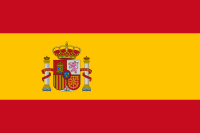 Barcelona, Spain
Barcelona, Spain Bethlehem, Palestinian Authority
Bethlehem, Palestinian Authority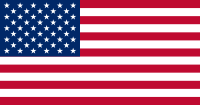 Corpus Christi, USA
Corpus Christi, USA Dallas, USA
Dallas, USA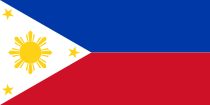 General Santos City, Philippines
General Santos City, Philippines Hamilton, Canada[41]
Hamilton, Canada[41]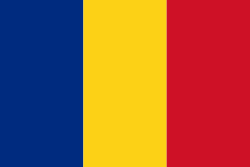 Iaşi, Romania
Iaşi, Romania Marikina, Philippines
Marikina, Philippines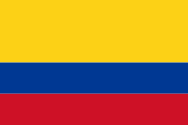 Medellín, Colombia
Medellín, Colombia Orlando, USA
Orlando, USA Rosario, Argentina
Rosario, Argentina San Antonio, USA
San Antonio, USA Shenyang, China
Shenyang, China
Gallery
References
- ↑ Parque Fundidora
- ↑ UNESCO Website
- ↑ Chipinque Ecological Park website
- ↑ Instituto Mexicano de Recursos Naturales Renovables
- ↑ El Porvenir, newspaper
- ↑ El Porvenir, newspaper
- ↑ North American Butterfly Association
- ↑ Mexico Trip, 3/7/03 - 3/11/03, Monterrey / Saltillo area. John Haas, Texas Ornithological Society. March 16, 2003. Last accessed December 18, 2006.
- ↑ Delimitación de las zonas metropolitanas de México
- ↑ Historical Weather for Monterrey, Mexico. Weatherbase.com. Last accessed December 18, 2006.
- ↑ "Republicano Ayuntamiento". Municipio de Monterrey. Retrieved on 2007-12-14.
- ↑ Nuevo León State Electoral Commission
- ↑ América Economía (Business Magazine), page 32, issue of May 2005
- ↑ Government of Monterrey Website
- ↑ Government of Nuevo León State Website
- ↑ Government of Monterrey Website
- ↑ http://www.nl.gob.mx/?P=t_tur_sertur_trans_metro
- ↑ UrbanRail.Net > Central America > Mexico > Monterrey Metro
- ↑ Passenger statistics for Monterrey Airport in 2006 http://www.oma.bz/EN/BoletinesDePrensa.asp?idAeropuerto=mty
- ↑ "Anuncian reactivación del vuelo Monterrey-Nueva York de Aeroméxico". Gobierno del Estado de Nuevo León, México (2005). Retrieved on 2008-07-06. "Cantú Valderrama añadió que con esto, fuera de la Ciudad de México y de los viajes charters a Cancún, Quintana Roo, Monterrey es el aeropuerto más importante en el interior de la República."
- ↑ Grupo Senda : Venta electronica de boletos
- ↑ Joint Commission International (JCI) Accredited Organizations
- ↑ MySA.com: Mexico
- ↑ Good care, low prices lure patients to Mexico | Dallas Morning News | News for Dallas, Texas | Mexico News
- ↑ Mexico Connect. North star shines. Retrieved February 11, 2006
- ↑ Weldmex General information. Retrieved February 11, 2006
- ↑ Monterrey, Mexico. Retrieved February 11, 2006
- ↑ 28.0 28.1 Country-data. Mexico - Industry. Retrieved February 11, 2006
- ↑ Mercer Human Resource Consulting (2006 [1]
- ↑ UANL Website About UANL
- ↑ UANL Website Location of UANL
- ↑ Universidad del Norte
- ↑ Uanl::Burrf
- ↑ Official Page
- ↑ [2]
- ↑ "Sultanes de Monterrey". Retrieved on 2007-10-18.
- ↑ Museo del Vidrio
- ↑ Presa de La Boca
- ↑ El Porvenir | Local | Proyectan Parque Acuático en Presa de La Boca
- ↑ Bioparque Estrella
- ↑ "Hamilton Ontario Sister Cities". Retrieved on 2008-01-25.
Further reading
- Michael Snodgrass, Deference and Defiance in Monterrey: Workers, Paternalism, and Revolution in Mexico, 1890-1950 (Cambridge University Press, 2003) (ISBN 0-521-81189-9)
External links
- Government of the City of Monterrey
- How to drive to Monterrey from U.S.
- Map of Monterrey
- Monterrey and Nuevo Leon pictures archive
- Monterrey and Nuevo Leon state government tourism website
- Red Catolica en Monterrey
|
|||||||
|
|||||
